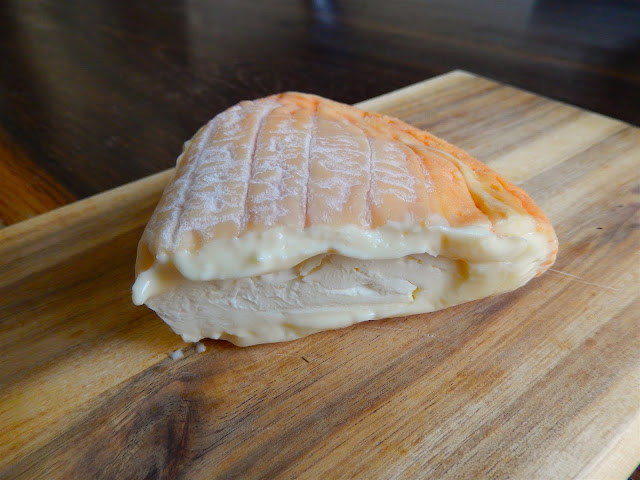How far are you willing to go for cheese? To what lengths would you strive to satisfy a craving for the best bite, the king of curd, the champion of cheese? Cheese is, after all, not for the faint of heart, for those content to know nothing but marble cheddar and mild gouda. The pursuit of cheese will take one far beyond the safe harbors of cheese sticks and ‘mexican four blend’ and lead him into alien and unknown seas with nothing but wits and the audacity to dare to guide him. And maybe also this blog. This blog would probably also be a decent guide.
This summer I posed myself this very question, as a trail map betrayed a dairy up and away from the beaten path. I was on a hiking trip in the Zillertal in Austria, and although I had not planned on any particular culinary diversions life sometimes surprises you in the most charming way. So it was that, on a cold, rainy, utterly cloud-bound day my companions and I set off up a dirt road following signs for “Stoankaser’n”.
Would it be open?
Would it be closed?
What awaited us at the end of the trail?
The sound of our boots was all we could hear over the gently falling rain, visibility came and went as we broke into and out of one fog bank after another. As we climbed higher and higher spirits began to falter, we had been hiking for 5 days already through snow and rain and intense heat. As we rounded a hillside we caught sight of some fellow travelers we’d been smelling for the last kilometer or so; a great herd of dairy cows. This was a good sign. Like the sirens of the Odyssey, they managed to derail a number of our group from the task at hand to take obligatory cow selfies. The rest of us pushed forward, our eyes searching longingly for a gently puffing chimney and the lighted windows of a cozy ‘Alm’.
The well kept forest that had originally made up our surroundings gradually gave way to low shrubs and pasture grasses rolling up the hillsides and out of sight into the clouds. Now and then great and violent rocky outcroppings would tower over us only to sink away into the grass a few steps up the road. We came to one building that looked promising, just beyond a cattle gate, but were let down to see there was no one home. The road continued on, though, and so did we.
Finally, near the top of this narrow valley we’d been tracing, just as the two sides met and began their steep final climb to the ridge above, we saw it: The Stoankaser’n. What does ‘stoankaser’n’ mean? I have been learning and speaking German now for ten years and I hesitate to answer. My German friends who were with me that day couldn’t do much better. In this context, though, it meant ‘victory’. The finish line in sight, our spirits soared and we strove on with a new warmth in our wet and weary bones.
Upon poking our heads through the door and out of the rain and into the warmth of the Alm, we knew the journey up had been worth it. A few other brave adventurers were gathered around their tables laughing and talking about their hikes, but our party of 10 easily found seats; the weather had kept the more timid away that day. A family operation, using milk exclusively from the dairy cows we had passed on our walk up, this dairy/alm combination was something from a fairy tale. Not just because it was warm and had a large ceramic oven to dry our clothing on. Not just because you can peek in to the one-room, one-man dairy and see the monumental Bergkäse forms that the husband fills every morning. The menu was traditional Alm fare, including an egg-noodle and cheese dish called Spätzle and great big slices of cured pork belly. The coffee drinks and hot chocolate were made with the raw milk from the local cows and tasted decadent and one of a kind. The service was friendly and food was filling.
And you could buy cheese there, too. So naturally I did. That is the story of how I came to be in possession, if only for a short time, of a true jewel of a Bergkäse, a testimony to its title, Stoankaser’n Zillertaler Bergkäse.
Origin: Junsbachtal, Zillertal, Austria
Rennet: Animal
Milk: Cow, unpasteurized
Affinage: 8-12 months
Notes:
Looks like Bergkäse. Is Bergkäse. These are not cheeses to be daintily put on a pedestal or made up with garnish. They call for honest beer and plain talk. The dairy cooperative in the valley is remote enough that the family usually doesn’t even overnight at the Alm but travels in from home to help with the patrons.
Thoughts:
This rich and full fat cheese welcomes you with notes of mushrooms and sweet grass, not so much caramel as the greener sweetness of sugarcane. Towards the end hints of garlic rise and fall and overall you get a complex but perfectly blended cheese, delicious and full bodied. There is no drama to this cheese, but it is truly a stand-alone and worthy example of the style.
The photos don't even do it justice, this was truly the tastiest Kasspatzen in the most delightful setting, and all you had to do was hike uphill (bothways?) through the rain and fog. So worth it. Never have I been more glad to own rain pants and a rain jacket. I also had the buttermilk and a raw milk hot chocolate. So choice. Mouth currently watering.



































